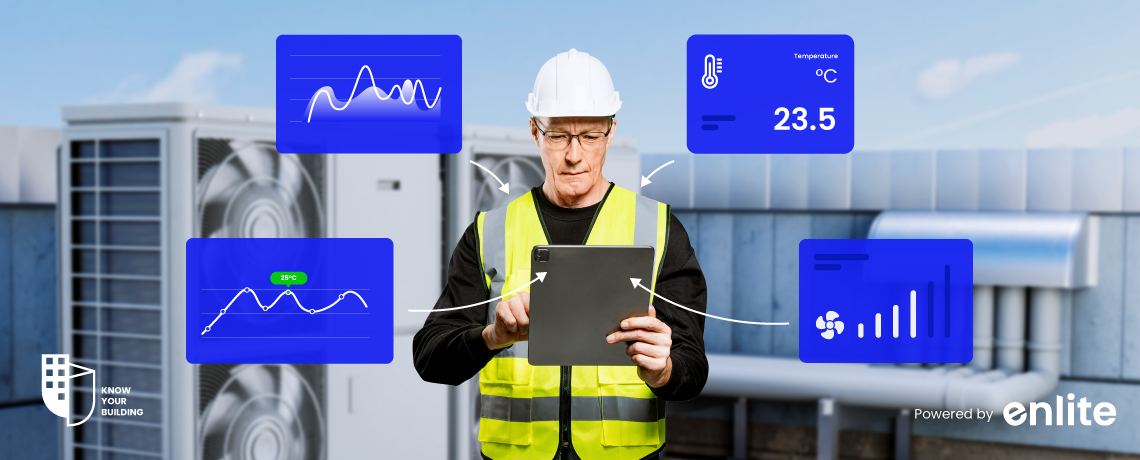Introduction
In today’s rapidly evolving world, managing HVAC systems efficiently is not just a matter of comfort but also a critical aspect of cost savings and environmental sustainability. Traditional HVAC management methods often fall short of delivering the required levels of efficiency and comfort, which is why embracing automation has become a game-changer in this field. In this comprehensive blog post, we will explore the significance of HVAC management, the challenges faced with traditional methods, and the transformative power of HVAC management systems powered by automation.
The Importance of HVAC Management
Energy Consumption and Cost Implications
Effective HVAC management can significantly impact energy consumption and costs. Inefficient systems can lead to wastage, resulting in higher utility bills and an increased carbon footprint. The financial implications make optimizing HVAC systems a top priority for businesses and homeowners alike.
Impact on Indoor Air Quality and Comfort
Comfort and indoor air quality are directly linked to HVAC system performance. Poorly managed systems can lead to uneven temperatures, inadequate ventilation, and indoor air quality issues. Achieving the right balance is crucial for occupant well-being.
Environmental Considerations
In an era where environmental responsibility is paramount, HVAC management plays a pivotal role. Energy-efficient HVAC systems reduce greenhouse gas emissions, making them a vital component of sustainability initiatives for both businesses and individuals.
Traditional HVAC Management Challenges
Manual Temperature Adjustments
Many HVAC systems still rely on manual adjustments, leading to inconsistent temperature control and inefficient resource utilization. This outdated approach is both labor-intensive and suboptimal in terms of performance.
Reactive Maintenance
Traditional HVAC management often follows a “break-fix” model, where maintenance and repairs are conducted only when something goes wrong. This reactive approach can result in costly downtime and increased repair expenses.
Lack of Real-time Data
Without real-time data on system performance, it’s challenging to make informed decisions. Traditional systems often lack the ability to provide insights into energy consumption, equipment health, and efficiency metrics.
Inefficient Resource Allocation
Inefficient resource allocation, such as overcooling or heating unused spaces, can lead to substantial energy waste and higher operational costs. Traditional systems often struggle to adapt to changing occupancy patterns and needs.
Embracing Automation in HVAC Management
What is HVAC Automation?
HVAC automation involves the use of technology and control systems to manage heating, ventilation, and air conditioning processes more efficiently. It includes the integration of smart devices, sensors, and software to automate temperature adjustments, monitor system health, and optimize energy consumption.
Key Components of Automated HVAC Management
A. Smart Thermostats and Sensors
Smart thermostats can learn occupants’ preferences and adjust settings accordingly. They are equipped with sensors that detect occupancy, humidity, and temperature changes, enabling precise control.
B. Building Management Systems (BMS)
BMS integrates various HVAC components and systems into a centralized control platform. It allows for real-time monitoring, remote access, and data analysis, making it a cornerstone of HVAC automation.
C. Predictive Maintenance
Predictive maintenance uses data from sensors and analytics to forecast equipment failures before they happen. By addressing issues proactively, businesses can avoid costly downtime and extend equipment lifespans.
D. Data Analytics and Machine Learning
Data analytics and machine learning algorithms can identify patterns and trends in HVAC system performance. This information can be used to fine-tune settings and optimize energy usage continuously.
Benefits of Automation
Energy Efficiency
HVAC automation systems can optimize temperature settings based on occupancy, time of day, and external weather conditions. This leads to significant energy savings by reducing unnecessary heating or cooling.
Cost Savings
Reducing energy consumption directly translates to lower utility bills. Additionally, predictive maintenance in automation helps identify issues before they become costly problems, minimizing repair expenses.
Improved Comfort
Automation ensures consistent temperature and air quality, enhancing overall comfort for building occupants. Individualized control options can also cater to personal preferences.
Environmental Sustainability
Reducing energy consumption not only saves money but also reduces the carbon footprint. Automation is a critical tool in achieving sustainability goals and environmental compliance.














